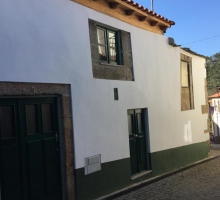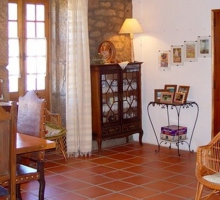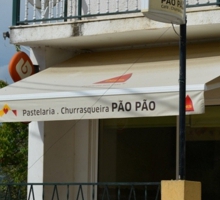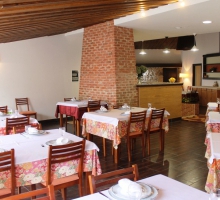There is a wealth of archaeological remains in Santa Leocádia, for e.g., the old bridge of Sta. Leocádia / Sto. Adrião over the Tedo River linking the municipalities of Tabuaço and Armamar, listed as a Property of Public Interest.
This bridge is part of the Roman roadway serving two secondary or municipal roads (viae vicinales), between Moimenta da Beira and Tabuaço and the Douro River, meeting at the bridge site. It was probably built in the 2nd century B.C. or 1st century B.C.. At that time, this important bridge was crucial for trade, facilitating communication between the coast and the inlands, and was also used by the armies. It is situated in a forested valley filled with chestnut trees, oaks and olive trees, and hillside vineyards.
The bridge has two round arches of identical size, supported by breakwaters at the bottom of the triangle section of the arches and supported by rock foundations on the river banks. The arches are filled at the top and sides with smooth carved stone blocks, laid without mortar. The bridge deck is in granite slabs. In mid- 20th century, the bridge deck was paved. In 1980, the asphalt was removed and replaced with cobblestones. As a precaution, load limits were implemented for the bridge.
Location: Tabuaço
This bridge is part of the Roman roadway serving two secondary or municipal roads (viae vicinales), between Moimenta da Beira and Tabuaço and the Douro River, meeting at the bridge site. It was probably built in the 2nd century B.C. or 1st century B.C.. At that time, this important bridge was crucial for trade, facilitating communication between the coast and the inlands, and was also used by the armies. It is situated in a forested valley filled with chestnut trees, oaks and olive trees, and hillside vineyards.
The bridge has two round arches of identical size, supported by breakwaters at the bottom of the triangle section of the arches and supported by rock foundations on the river banks. The arches are filled at the top and sides with smooth carved stone blocks, laid without mortar. The bridge deck is in granite slabs. In mid- 20th century, the bridge deck was paved. In 1980, the asphalt was removed and replaced with cobblestones. As a precaution, load limits were implemented for the bridge.
Location: Tabuaço







